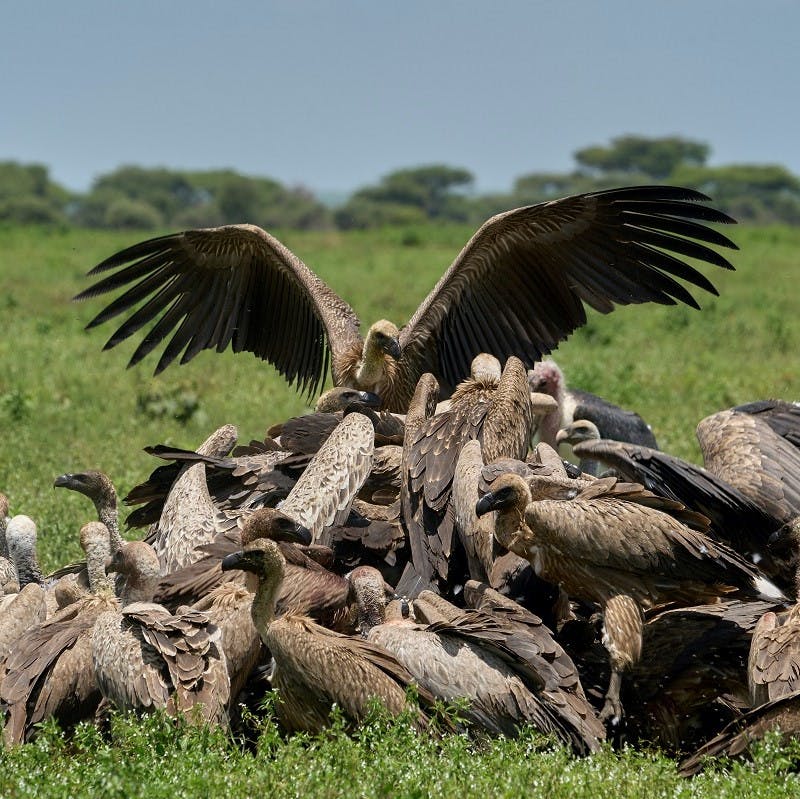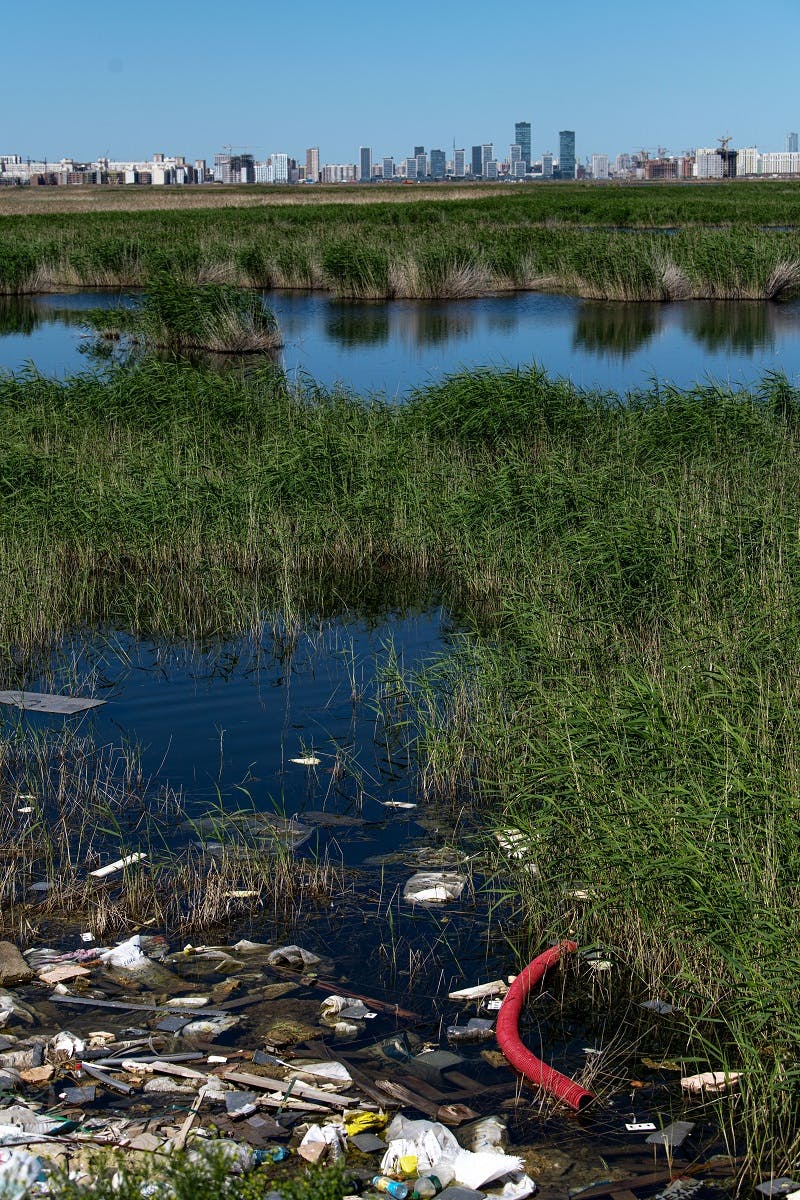- What is Rewilding and what does it do differently?
- 1. Rewilding delivers a high environmental return on investment
- 2. Rewilding not only repairs biodiversity damage, but it also enhances it
- 3. Rewilding brings transformative and tangible change
- 4. There is an over-reliance on carbon-offsetting to mitigate against climate change
- 5. Improved employee engagement and productivity
Businesses have a huge role to play in achieving a greener planet. Increasingly, employees are calling for a better response to the climate crisis from their employers. Both megatrends and microforces are pushing for climate-positive action in the workplace. A survey conducted on 2000 UK office workers found 65% of respondents were more likely to work for a company with a strong environmental policy. In its 2019 progress report, the UK’s committee on climate change put businesses in the driving seat by stating it is primarily up to them to deliver the net-zero emissions target.
Of the many forms of sustainability investments, rewilding is gaining worthy recognition as a reliable option in delivering concrete results and benefits for the climate, ecosystems, biodiversity, employees, and businesses. Here are 5 important reasons why.
What is Rewilding and what does it do differently?
Traditional conservation efforts have been known to focus on restoring species and habitats in isolation and have been guilty or unknowingly working whilst applying the ‘shifting baseline syndrome’ – when conservationists strive to restore species or habitats to previous states which had already been altered or degraded. Rewilding differs in approach by presuming that nature knows how to manage landscapes best and there is no ‘desired state’ to reach, only a wilder one. It instead facilitates towards a healthy, resilient, and rich natural state. And so, rewilding focuses on restoring important components of nature that are absent then lets nature take over. This could mean helping to repair the following natural processes: grazing, predation, regeneration, and decomposition. For example, rewilding interventions that rebuild populations of vultures who rid the landscape of potential diseases when they consume carcasses.

1. Rewilding delivers a high environmental return on investment
The global pandemic demanded a dramatic shift in the way we work. One positive impact on the environment was the widespread adoption of remote working. As we move into a post-COVID-19 world, the need to build back greener challenges businesses to make more complex decisions on where and how to invest in sustainability to ensure the best ROI.
Rewilding degraded landscapes can be one of the cheapest and most effective ways to mitigate climate change. An extensive study published in the journal Nature, points out that by restoring only 15% of degraded lands in critical areas, 30% of carbon from the post-industrial revolution can be locked away. In addition, biodiversity has the chance to recover, with this restoration there is the potential to save 60% of species expected to disappear.
Opportunities exist to restore areas with immense carbon-capturing capabilities such as peatlands, wetlands, savannahs, oceans, and natural forests at a fraction of the cost of other sustainability investments. With only a mere 1% of finance dedicated to fighting the global climate crisis going into restoring these habitats, great ecological gains can be made from pursuing this avenue.


Take action now
Do you want to have a direct impact on climate change? Sir David Attenborough said the best thing we can do is to rewild the planet. So we run reforestation and rewilding programs across the globe to restore wild ecosystems and capture carbon.
Get involved2. Rewilding not only repairs biodiversity damage, but it also enhances it
Companies wishing to assess and reduce their impact on natural capital – natural assets like geology, soil, air, water, and life - often come into difficulty in determining the scale of their impact. This is especially the case if supply chains are complex and significant impacts occur further upstream where raw materials are extracted. One way to start addressing this is to invest in projects which have a Net Positive Impact on biodiversity; they create an overall better effect on the variety of life on earth.
One such example is the reintroduction of keystone species – those that have a profoundly positive impact on their ecosystem – back into their natural habitat. Take the European Bison as an example, their movements on the land control the overgrowth of certain vegetation; they provide food for insects and fertilizer for plants with their dung; and their carcasses feed a variety of animals.

Conservation of biodiversity and ecosystems are cost-effective, scalable ways to increase the planet’s resilience to temperature rises, natural disasters and other climate extremes, and humanity’s ability to adapt.
The European Investment Bank
3. Rewilding brings transformative and tangible change
The urgency driving employees to demand more corporate action on sustainability can in part be explained by the lack of transformative and tangible change they witness in everyday life. Vivid and compelling messages of ecological destruction, as depicted in Sir David Attenborough’s A Life on our Planet, are hitting people across the globe leaving them fraught that not enough is being done. The successes generated by rewilding projects are inspiring people with visual evidence that humans can convert landscapes devoid of life into ones flourishing with it. From large-scale rewilding such as the reintroduction of wolves into the Yellowstone National Park (US) bringing back a host of wildlife and reshaping the landscape, to the Knepp estate (UK) which changed from a failing intensive-farm to a natural habitat where rare species are now found and wild-meat is produced.
Businesses can directly fund rewilding projects that deliver measurable results in the fight against climate change in a spectrum of areas including,
- monitoring and protecting vulnerable biodiverse species from extinction
- boosting natural carbon sinks and the quantity of carbon they sequester
- improving soil erosion and natural water purification
- provide natural breaks that protect against wildfires
- reintroducing species like the beaver that build natural defences against flooding

4. There is an over-reliance on carbon-offsetting to mitigate against climate change
One of the most popular ways businesses seek to reduce their impact has been to offset their carbon emissions. While there is definitely value in carbon offsetting, especially in the scale-up of energy efficiencies, the lack of transparency, accountability and concerns raised over the credibility of international standards has tainted carbon-offsetting schemes and their perceived effectiveness. This is particularly the case with forestry protection schemes where additionality is difficult to demonstrate. A scheme has ‘additionality’ if it can prove that the amount of carbon captured wouldn’t have happened without the scheme’s contribution. However, cases have arisen where offsets are sold to prevent deforestation, but there weren’t ever any plans to deforest or deforestation occurs in another forest instead.
Growing agreement amongst conservationists and scientists now suggests businesses must look to avoid, reduce, and rehabilitate before even considering carbon offsetting. The IUCN (International Union for Conservation of Nature) stresses the importance of implementing change in this order so companies do not "sidestep on-site environmental protection and management". In addition to the avoidance and reduction of emissions, businesses are turning to rewilding to play a proactive part in the restoration of ecosystems and biodiversity. Those who partner with rewilding organisations in conservation efforts can reap the rewards (outlined in the next section) and can showcase the good that can be achieved together. This partnership also has the potential to lead to more environmentally conscious approaches being adopted within businesses themselves further down the line.

5. Improved employee engagement and productivity
In the face of the climate crisis, more people are experiencing a sense of helplessness. Research conducted by Yale University highlighted that over 40% of Americans feel helpless about climate change. Rewilding can address this by offering a narrative of hope and connecting people with tangible initiatives designed to build back a better natural world. Given that millennials represent the bulk of the workforce, the success stories of rewilding can go a long way in meeting their need to see meaningful change. The impact on an eco-conscious workforce for businesses contributing to rewilding projects includes improved employee engagement, fulfilment and ultimately productivity.


Sources & further reading

- “Employees want climate-positive action from companies. Here’s how they can deliver” - Reuters
- “The role of business in climate change” - The Financial Times